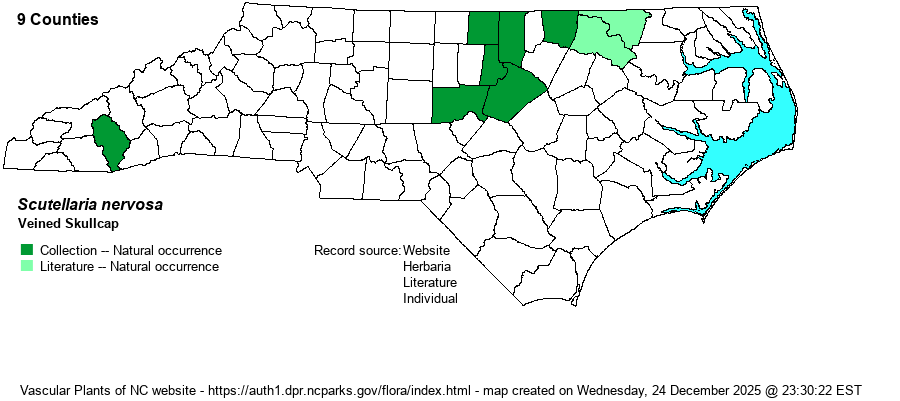| Author | Pursh | |
| Distribution | Essentially restricted to the northeastern Piedmont and the adjacent floodplain of the Roanoke River in the upper Coastal Plain (of Northampton and Halifax counties). One specimen record for the southern Mountains (Jackson County).
This is a somewhat Northern species, ranging from southern NY and IA south only to central NC, central GA, and northern AL. | |
| Abundance | Rare in the northeastern Piedmont and adjacent upper Coastal Plain. Now historical in the southern Mountains. Several populations were destroyed by flooding of reservoirs. Though the NCNHP has 17 records in its database, only about 6 are known to be extant, and thus the S1 State Rank is accurate, as most populations are small. It is a State Endangered species, especially as so few of the known populations are still extant. | |
| Habitat | This is a species of moist soil in high pH conditions. It grows mainly in bottomland forests of brownwater rivers with rich sediment load, as well as growing on natural levees and adjacent slopes. Most records are from the Neuse and Roanoke river floodplains. |
| Phenology | Blooms in May and June, and fruits from June to July. | |
| Identification | This is a quite slender and normally unbranched species, growing to about 1-1.5-feet tall. It has scattered paired leaves, being ovate, with a rounded to nearly truncate base, essentially sessile, about 1.5-2 inches long and half as wide, and serrated on the margins. The leaf blade has deeply entrenched veins, generally noticeable in the field -- hence the name nervosa (veined). Upper leaves are quite small and bract-like, and in the axils of the upper leaves grow one or two quite small flowers. Each flower is only about 1/3-inch long, pale blue on average, but in some individuals can be white and moderately blue in others. But, the flowers are hard to spot unless you bend down to their level. In fact, to identify this species, you are more likely going to do it by the relatively small and sessile (almost clasping) ovate leaves. Thankfully, a handful of plants often grow closely, but even so you can easily walk by such plants. | |
| Taxonomic Comments | None
| |
| Other Common Name(s) | Bottomland Skullcap, Veiny Skullcap | |
| State Rank | S1 | |
| Global Rank | G5 | |
| State Status | E | |
| US Status | | |
| USACE-agcp | FAC link |
| USACE-emp | FAC link |

